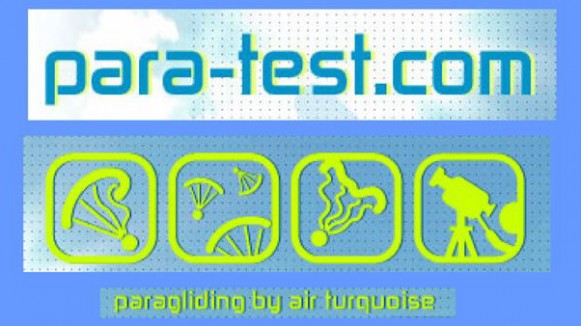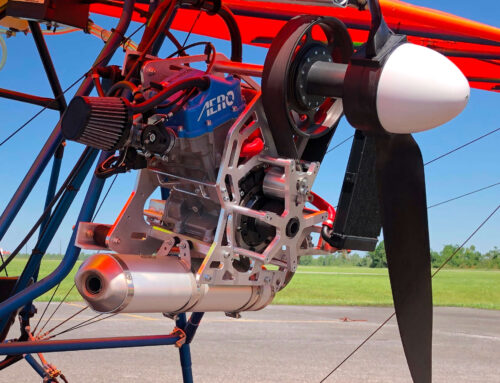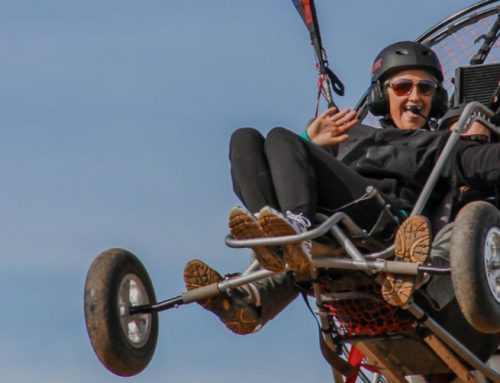What is “EN Testing” and “EN Paraglider Certification?
(Click Image to learn more about Paraglider Certification)
EN Paraglider Certification, or “European Norm” regulations, were originally developed to assess the flight characteristics of Paragliders. A group of experts from several European countries had the goal of creating a four-level glider certification system (A, B, C, &D). This was to help consumers and manufacturers determine which glider is appropriate for a pilot’s given skill level. (A) being the safest “beginner-friendly” gliders, and (D) being reserved for highly-skilled pilots. The founding members of the group wanted even the lowest level of safety (D gliders), to be “safer” than previous certifying organization’s top-levels, and with the most stable level (A gliders) being “safer” than any gliders in production. To ensure the consistency of certifications, a simple description of each class was developed early on. Countless tests are performed to determine the paraglider’s behavior in specific maneuvers. These tests are conducted at both the minimum and maximum weight limits of the glider. After a 10-year period of expert testing, writing, refining, and validating, the EN Certification Standards have become internationally recognized as one of the most trusted ratings in the industry.
Which EN Paraglider Certification is best for YOU?
The European Norm (or EN Paraglider Certification) focused on pilots with the least experience, guaranteeing the MAXIMUM LEVEL OF SAFETY. The various EN Classes are very strict. In fact, even the slightest deviation from the strict EN standards can disqualify the glider. Additionally, ratings not only take the pilot’s skill-level into consideration, but also the “flight characteristics” or responsiveness of the glider. “Flight Characteristics” is basically a term which describes the glider’s tendency to lose control, and the likelihood or speed of it’s recovery.

(209) 786-7899
EN-A Certified Paragliders:
FLIGHT CHARACTERISTICS:
Paragliders with a maximum level of passive-safety. EN-A Certified Paragliders are extremely forgiving and show exceptional resistance to deviation from normal flight.
PILOT SKILLS REQUIRED:
EN-A Certified Paragliders are designed for ALL PILOTS, and suitable for any level of training. These are great for pilots with less than 1 year of flight experience, or for those who fly less than twice a month (25 hours a year).
EN-B Certified Paragliders:
FLIGHT CHARACTERISTICS:
EN-B Certified Paragliders display good passive-safety and forgiving flight characteristics. The glider must have some resistance to deviation from normal flight.
PILOT SKILLS REQUIRED:
EN-B Certified Paragliders are designed for ALL PILOTS, and suitable for any level of training. There are a broad range of paragliders on the market fitting this category. Some are closer to “EN-A” gliders than others. NOTE: Pilots should have experienced AT LEAST 30 hours of flight-time in various flight conditions. At least 10 of those hours being in thermic conditions. EN-B Certified Paragliders are commonly flown by pilots with “ratings” or “certifications,” and for those who fly no less than 50 hours per year (3-4 times per month).
EN-C Certified Paragliders:
FLIGHT CHARACTERISTICS:
EN-C Certified Paragliders possess a moderate level of passive safety. These gliders can potentially display dynamic reactions to turbulence or pilot errors. Precise “active piloting” or input may be required for recovery.
PILOT SKILLS REQUIRED:
EN-C Certified Paragliders are designed for intermediate pilots who possess good “active piloting” skills, and are quite familiar with recovery techniques. The pilot must fully understand the implications of flying a glider with reduced passive safety. Pilots should possess an advanced rating or certification, and have logged HUNDREDS of flight hours in ALL conditions (especially thermic). An “SIV” or “Advanced Maneuvers” Clinic should be completed by pilots flying EN-C Paragliders. Recommended for those who fly at least 10 hours per month (2 times per week), and for those who are comfortable handling large asymmetric collapses.
EN-D Certified Paragliders:
FLIGHT CHARACTERISTICS:
EN-D Certified Paragliders have demanding flight characteristics. They can have potentially violent reactions to turbulence or pilot error. Precise pilot input will be required for recovery to normal flight.
PILOT SKILLS REQUIRED:
EN-D Certified Paragliders are for the most advanced pilots who are very well-versed in recovery techniques. Pilots should fly very actively, possess much experience flying in turbulence, and fully accept the implications of flying such a glider. Pilots should fly for many years before considering an EN-D Certified Paraglider. Various advanced maneuvers or “SIV skills” must be MASTERED to fly such a glider, and pilots should fly no less than 200 hours a year (often in strong conditions).







Leave A Comment
You must be logged in to post a comment.